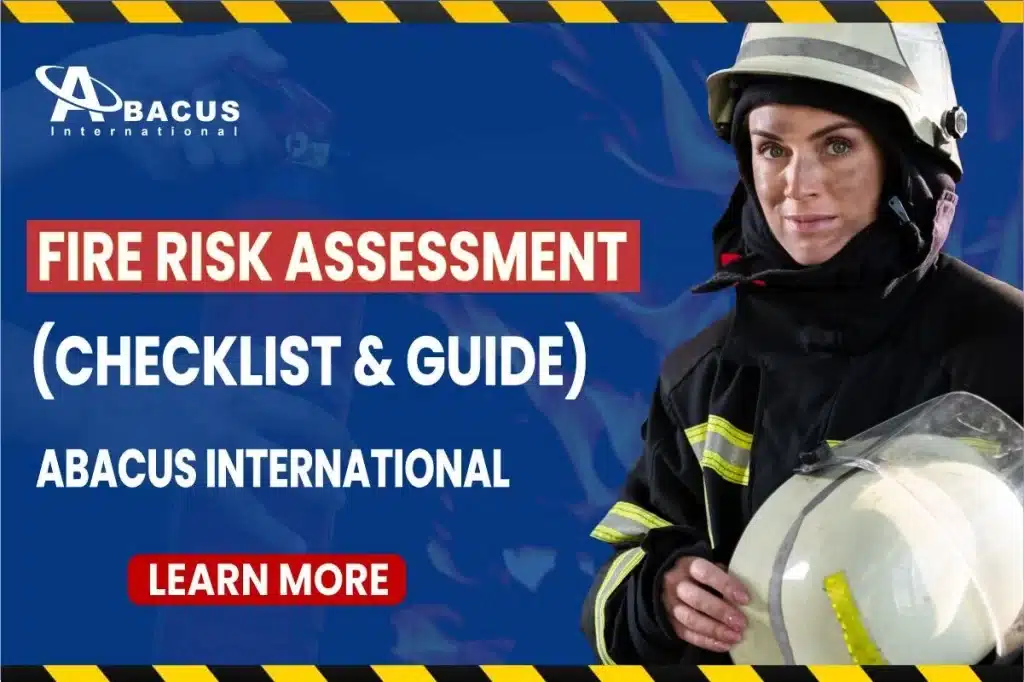What is a fire risk assessment?
A fire risk assessment is a systematic evaluation of a building, premises, or site to identify potential fire hazards, assess the level of risk associated with those hazards, and implement appropriate control measures to prevent or reduce the risk of fire incidents. It involves thoroughly examining the premises, considering factors such as building structure, occupancy type, potential ignition sources, and the availability and effectiveness of fire safety measures.
Why is it essential to conduct a fire risk assessment?
Conducting a fire risk assessment is crucial for several reasons:
Prevention of Fire Incidents:
A fire risk assessment helps identify potential fire hazards and allows for the implementation of preventive measures. By understanding the risks, control measures can be implemented to minimize the likelihood of fire incidents, protecting lives, property, and the environment.
Compliance with Regulations:
Local fire safety regulations and building codes often require fire risk assessments. Conducting an assessment ensures compliance with these legal requirements, demonstrates a commitment to maintaining a safe environment, and avoids potential legal consequences.
Protection of Lives and Property:
The assessment helps safeguard the safety and well-being of occupants within a building or premises. Appropriate control measures can be implemented by identifying and addressing fire risks, reducing the potential for injuries or fatalities. Additionally, it helps protect property, assets, and investments from fire-related damage.
Emergency Preparedness:
A fire risk assessment is integral to emergency planning. It provides crucial information for developing effective evacuation plans, identifying escape routes, evaluating the adequacy of fire safety systems, and ensuring the availability of proper emergency response protocols. This enables occupants to respond swiftly and safely during a fire emergency.
Who should conduct a risk assessment?
Ideally, Fire risk assessments should be conducted by competent individuals with the necessary knowledge, skills, and understanding of fire safety principles and regulations. This may include trained fire safety professionals, fire safety officers, or individuals with relevant fire safety certification and experience in fire safety management.
The responsibility for conducting a fire risk assessment typically lies with the building owner, employer, or responsible party. They should ensure that competent individuals within their organization or external fire safety consultants are assigned to carry out the assessment.
The individuals conducting the assessment must comprehensively understand fire hazards, fire prevention measures, fire protection systems, and emergency response protocols. They should be able to assess the premises thoroughly, identify potential risks, and provide appropriate recommendations for controlling and mitigating those risks effectively.
Fire Risk Assessment Checklist
Below is a Fire Risk Assessment Checklist that can be used as a guide to assess potential fire hazards and risks in a building or premises:
Building Information:
- Identify the building or premises being assessed.
- Note the building’s layout, including exits, stairways, and fire escape routes.
- Determine the occupancy type and the number of occupants.
Fire Hazards Identification:
- Identify potential ignition sources such as electrical equipment, heating systems, open flames, or smoking areas.
- Identify sources of fuel, including flammable liquids, gases, or materials.
- Note any combustible or flammable storage areas.
Also Read: Types Of Fire Extinguishers & Their Uses
Fire Prevention Measures:
- Assess the condition of electrical systems, checking for exposed wiring, overloaded circuits, or faulty equipment.
- Evaluate housekeeping practices, looking for clutter, improper storage of flammable materials, or blocked fire exits.
- Check the availability and functionality of fire prevention equipment, such as fire extinguishers, sprinkler systems, or smoke detectors.
Emergency Preparedness:
- Review the emergency evacuation plan, ensuring it is up to date, prominently displayed, and understood by all occupants.
- Please verify the availability and accessibility of emergency exits, ensuring they are unobstructed and properly marked.
- Assess the adequacy of emergency lighting, signage, and communication systems.
Fire Safety Training and Education:
- Evaluate the fire safety training provided to occupants, noting the frequency and effectiveness of training programs.
- Assess the level of occupant awareness of fire prevention, evacuation procedures, and proper use of fire safety equipment.
Maintenance and Inspections:
- Review records of routine inspections and maintenance activities related to fire safety systems and equipment.
- Verify that fire safety equipment, including fire extinguishers, alarms, and sprinkler systems, have undergone regular inspections and are in working order.
- Check documentation of any repairs or maintenance needed to address identified issues.
Record Keeping and Documentation:
- Ensure a logbook or recordkeeping system is in place to document fire safety inspections, maintenance, and training activities.
- Verify that incident reports, including fire drills or actual fire incidents, are properly documented.
Remember, this checklist serves as a general guide and may need to be adapted based on the specific requirements of the building or premises being assessed. Conducting a thorough fire risk assessment is essential for identifying potential hazards, implementing appropriate control measures, and ensuring the safety of occupants and property.


